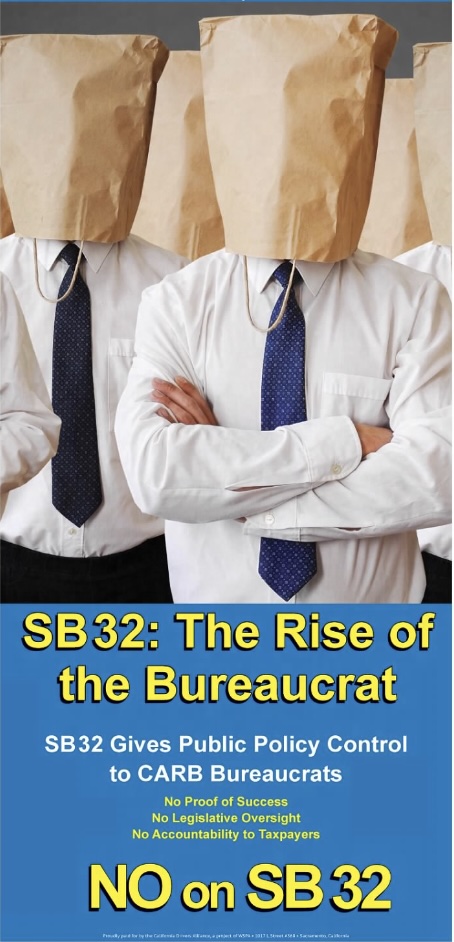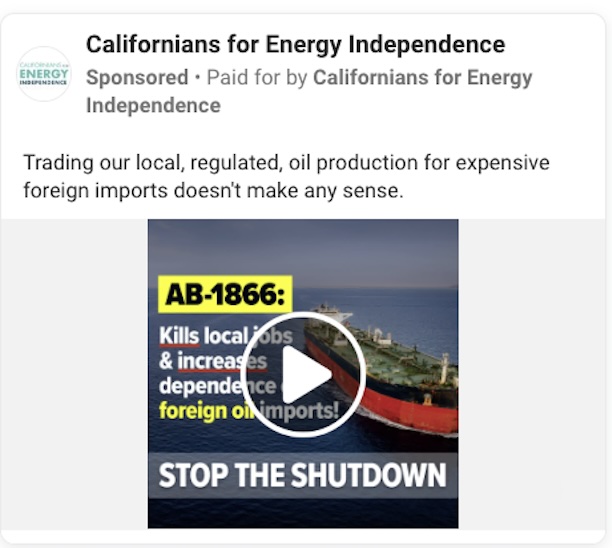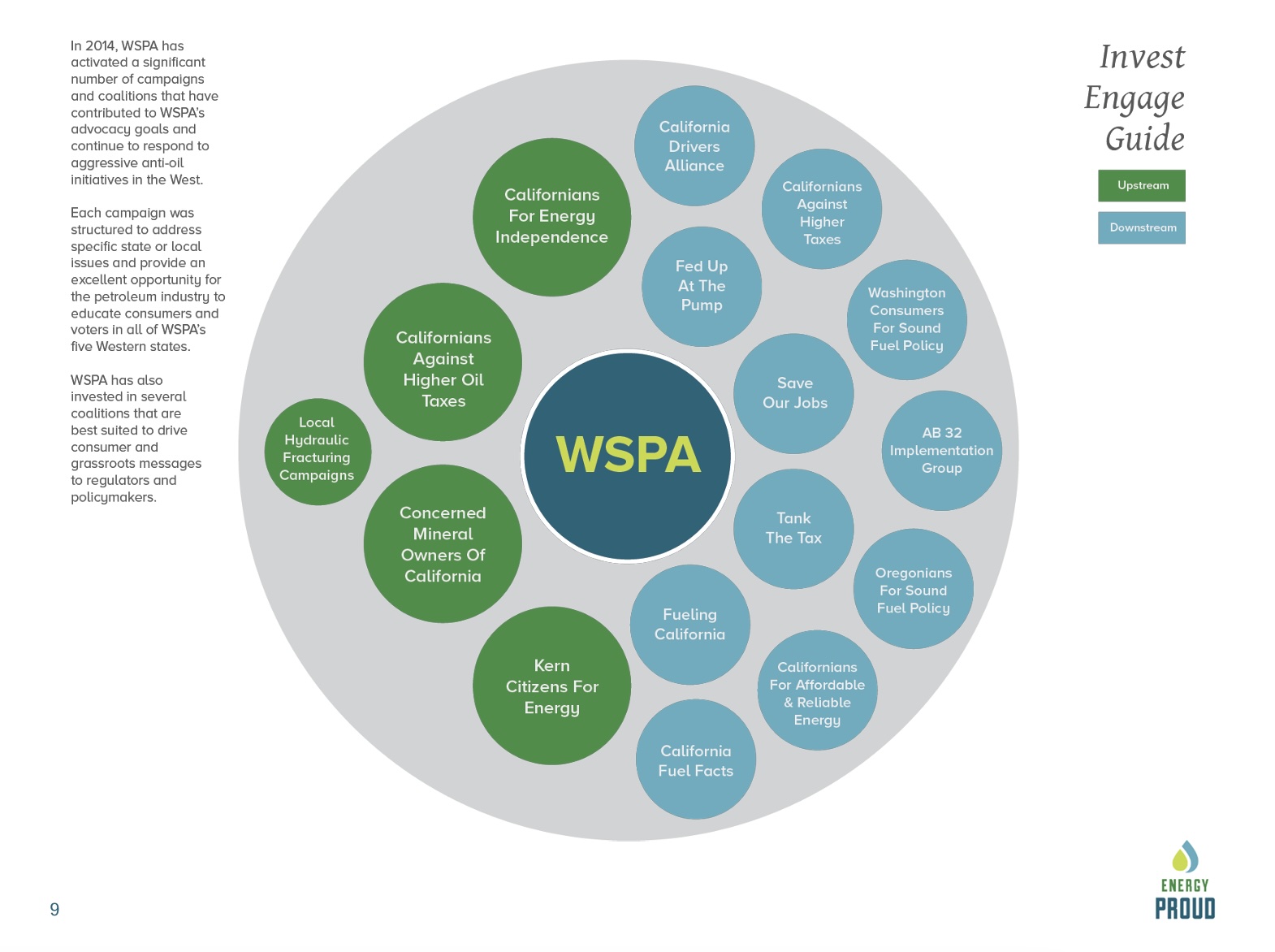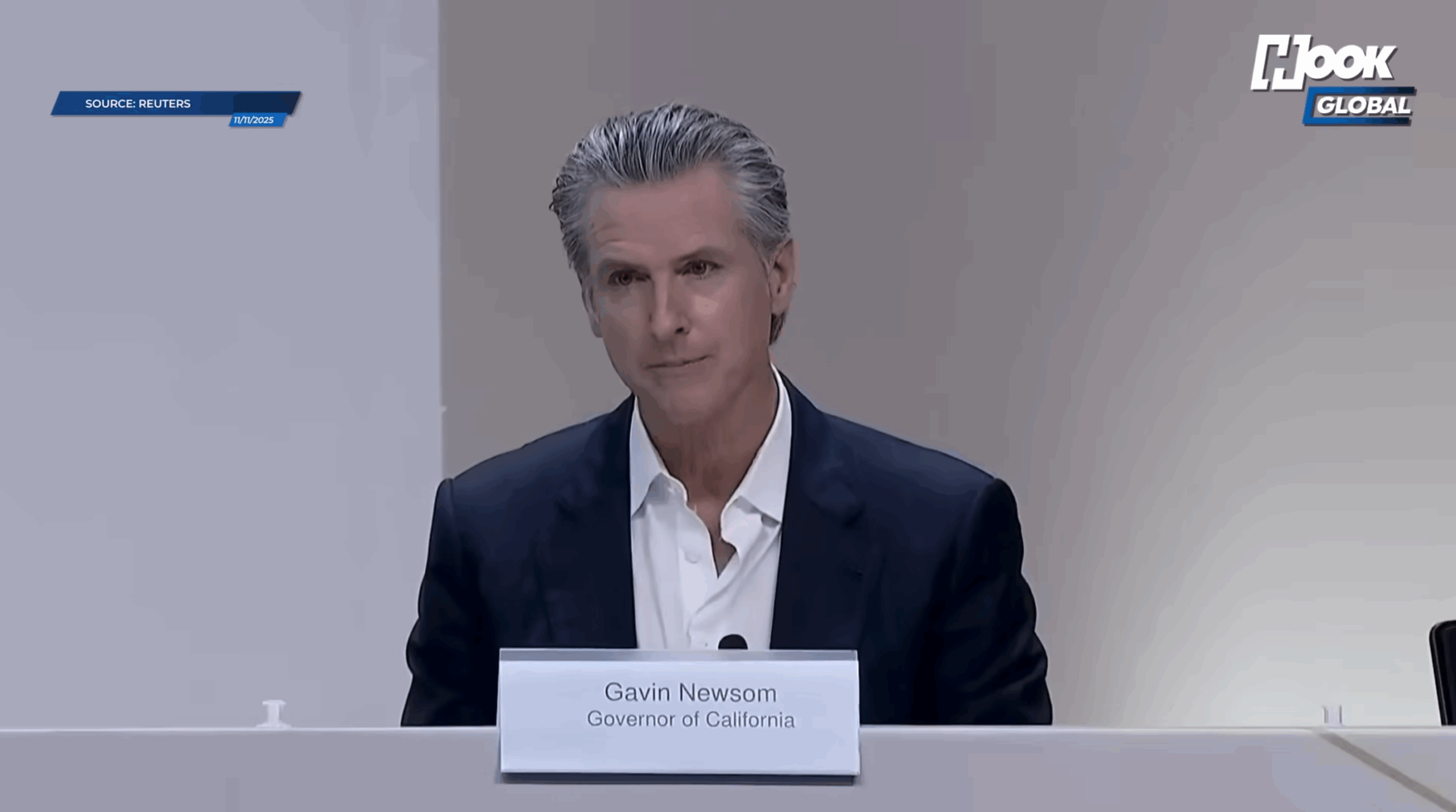The groups have spent tens of millions on influence activities and advertising
A decade ago, the anti-fracking movement expanded across California communities as advocates pushed the state to meet its reputation as a global climate policymaking leader. The Western States Petroleum Association (WSPA), oil majors’ main lobbying body in California, responded by announcing its own countermove: deploying its array of astroturf groups to give the appearance of a grassroots movement in support of the toxic and water-contaminating drilling technique and counter what it called “aggressive anti-oil initiatives in the West.”
In a November 11, 2014 slide deck presentation delivered by its President Catherine Reheis-Boyd, WSPA gave a post-midterm election analysis of the political landscape for its allies never meant for a public airing. Pointing to the then-nascent fracking boom as the “best of times” in the presentation, Reheis-Boyd then contrasted the rise of the anti-Keystone XL Pipeline, anti-fracking movement in California and beyond, and the rise of the fossil fuel divestment as the “worst of times.”

The astroturf groups offered cover for WSPA’s major oil members, like Chevron, ExxonMobil, Shell Oil, Marathon Petroleum, Phillips 66, Valero, by allowing them to engage in aggressive misinformation campaigns against climate and community protections without having to put their own brands on the line.
A week later on November 18, 2014, the slide deck leaked, first published by NPR affiliate outlet Northwest News Network. The slide deck provided a stunning visual look at WSPA’s front groups presented in the form of a web depicting how the various misleadingly named groups all work under one banner in association with WSPA.

WSPA did not deny that it backed the front groups. Instead, a spokeswoman for the organization told the outlet, “That was just an attempt to sort of put on as single slide a graphical depiction for folks as to how many issues we’re involved in and the various coalitions that we’re working with to represent the industry’s point of view.”
It’s now 10 years later and most of the astroturf organizations listed on the web are still as active as ever, if not more so. So, what have they done over the past ten years, what actions are they pursuing today, and how can we hold the oil industry accountable for using these front groups to obstruct critical climate progress?
Here’s a retrospective on an anniversary that WSPA would prefer to ignore, one that highlights the numerous wins by the climate justice movement despite Big Oil’s relentless opposition since the release of the infamous slide deck.
Tracing the Money: Expendables and Receivables by Big Oil’s Front Groups
According to disclosures to the California Secretary of State, since the slide deck leaked during the fourth quarter of 2014, total spending by WSPA’s front groups on California political influence spending has reached nearly $32 million, as seen in Table 1 below. Californians for Energy Independence (CEI) served as the most used of all the front groups spending close to $18 million of the total.
| Table 1: Spending by WSPA’s Front Groups on California Political Influence Spending, Q4 2014 to Present | |
| Front Group | Amount Spent |
| Californians for Energy Independence | $18.2 million |
| Californians for Affordable & Reliable Energy (CARE) | $12.2 million |
| Californians Against Higher Taxes | $1.5 million |
| TOTAL | $31.9 million |
Front group spending on political influence during the 2023-2024 legislative session represents about 67% of total spending in the last 10 years alone, or $21.3 million. This spending is largely due to an increase in the state’s polluter accountability measures spearheaded to end neighborhood drilling, require oil companies to pay to clean up idle wells, and stop oil refiners from gasoline price gouging.
State disclosures further reveal who has funded these so-called WSPA front groups. While WSPA represents multiple oil companies, it’s Chevron — WSPA’s largest member — that has contributed the most money. Chevron alone provided $18.6 million of the $29.7 million spent by the oil industry on these front groups over the past decade, covering about 63% of the total.
| Table 2: Oil Industry Funding to WSPA’s Front Groups, Q4 2014 to Present | |
| Funder | Amount |
| Chevron | $18.6 million |
| Aera Energy | $3.6 million |
| WSPA | $3.2 million |
| Marathon Petroleum | $2 million |
| California Resources Corporation (CRC) | $1.1 million |
| Valero | $1 million |
| California Independent Petroleum Association (CIPA) | $199,525.74 |
| TOTAL | $29.7 million |
During the 2023-2024 legislative session alone, Chevron has contributed $10.9 million — 37% of the decade’s total documented spending — on front groups. When combined with Aera Energy (now owned by California Resources Corporation), this figure rises to $13.1 million or 44%. In short, front group spending has surged recently, led largely by Chevron.
This spending in California politics doesn’t represent all the funds amassed by oil industry front groups over the past decade. IRS tax filings show these groups collected over $115 million since the slide deck leaked in 2014, with CEI receiving the largest share.
| Table 3: Grants and Contributions Received by WSPA’s Front Groups from Q4 2014 to Present | |
| Front Group | Grants + Contributions Received |
| Californians for Energy Independence | $94.4 million |
| Californians for Affordable & Reliable Energy (CARE) | $20 million |
| Californians Against Higher Taxes | $1.3 million |
| TOTAL | $115.7 million |
Finally, tax disclosures reveal that front group spending went largely toward advertising, with 36% of the contributions and grants received going toward that end.
| Table 4: Total Amount Spent on Advertising by WSPA’s Front Groups from 2014-2023 | |
| Front Group | Amount |
| Californians for Energy Independence (CEI) | $30.5 million |
| Californians for Affordable & Reliable Energy (CARE) | $8.4 million |
| Californians Against Higher Taxes | $362,612 |
| TOTAL | $41.3 million |
The Main Episodes When WSPA Deployed their Front Groups
The amount of money spent is significant, but another important question is what circumstances led WSPA to create these front groups. Below, we present case studies that illustrate how these front groups have operated.
CEI Launched with Different Name to Promote Fracking
On March 13, 2014 — about six months before the slide deck leaked — CEI filed articles of incorporation with the state to operate as a nonprofit corporation named “Californians for a Safe, Secure Energy Future,” and under that name immediately began campaigning against a fracking ban proposal the Los Angeles City Council had just voted to approve. The front group paid for newspaper ads and created a website where city residents could sign a petition demanding Councilmembers withdraw their support for the fracking ban. The website has since been scrubbed from the Internet, but a version archived in 2016 can still be seen online. The front group then pivoted, renamed itself “Californians for Energy Independence,” and continued to fight climate justice measures on fracking.

CEI Super-PAC used by oil industry to Finance 2014 Electoral Efforts to Block Local Fracking Bans
That same year, the oil industry slapped the same “Californians for Energy Independence” name onto a state Super-PAC and used it to fund its electoral fight against fracking bans in three other municipalities.
The Super-PAC, Californians for Energy Independence, Including Energy Producers, launched on July 3, 2014, with attorney Steven Lucas from the San Ramon, CA-based law firm Nielsen Merksamer as Treasurer and WSPA President Catherine Reheis-Boyd as a principal officer. Nielsen Merksamer and Lucas have served as the legal registering agent and counsel for Big Oil front groups and electoral campaign committees with similarly misleading names for decades. The firm’s work on behalf of the oil industry continues today.
During the 2014 campaign cycle, the Super-PAC raised $9.7 million from companies such as Aera Energy ($3 million), Chevron ($2.5 million), Occidental Petroleum ($2.5 million), Freeport-McMoran ($1 million), and ExxonMobil ($300,000), among others.
The 2014 oil-funded ballot initiatives campaigns succeeded in two out of three instances, only losing in San Benito County. However, the landscape on fracking shifted in the following decade, culminating in September 2020 when Governor Gavin Newsom signed a historic statewide fracking ban, taking effect earlier this year.
WSPA Deployed Other Front Groups to Fend Off Climate Law Implementation
While Big Oil used CEI to fight off fracking bans, WSPA deployed the rest of its army of front groups to attempt to delay California’s landmark climate law, AB 32 (the Global Warming Solutions Act), that same year. The Global Warming Solutions Act today serves as the driving force for a wide ranging suite of climate policy programs and was the first major climate law passed in the United States.
For example: Californians Against Higher Taxes, a WSPA front group listed on the 2014 slide deck, ran ads in English and Spanish opposing the so-called “hidden gas tax” set to begin on January 1, 2015 slated to fund some of those climate programs. The California Drivers Alliance — another group named on the slide deck — also pushed this message through a TV ad blitz. Climate activists countered the misleading claim made in the ads, noting the oil industry knew of the implementation date for years and claiming the oil industry aimed to mislead the public to delay implementation it had long advance notice to prepare for. As one Sierra Club activist put it, “the only thing hidden here is the true cost of burning fossil fuels.”
Jerry Azevedo, listed as the spokesperson for California Drivers Alliance in its only press release, previously worked at Burson-Marsteller and APCO Worldwide — firms linked to climate change denial and known for their history of creating front groups on behalf of Big Oil, Big Tobacco, and other corporate interests.
Despite WSPA’s tactics, the gas tax under AB 32 went into effect as planned.
Misleading Opposition to Landmark 2015, 2016 Climate Bills
Heading into 2015, WSPA’s front groups prepared for more battles to protect Big Oil’s pocketbooks at the expense of the climate. It narrowed its focus on blocking an oil severance tax and fighting SB 350, the Clean Energy and Pollution Reduction Act, which aimed to double building energy efficiency and boost renewable energy production 50% by 2030. The oil severance tax was defeated, but SB 350 passed — with a significant last-minute change that removed a 50% gasoline reduction mandate by 2030.
To oppose SB 350, the California Drivers Alliance ran ads calling it the “Gasoline Restriction Act” and falsely warned of “gas rationing or surcharges based on driving habits,” claims that were not authorized by the bill. They also sent anti-SB 350 mailers, using a website domain that wasn’t their own, possibly to obscure the oil industry’s backing, with the domain shuttling web browsers to a now-defunct site with objective information about driving in Texas. Consumer Watchdog accused WSPA of potential mail fraud, urging an investigation in a letter written to then-Attorney General Kamala Harris.
In 2016, WSPA resurrected the California Drivers Alliance again, this time to oppose SB 32 by launching a now-defunct website called NoOnSB32.org, which hosted a petition with a demand not to “let the bureaucrats waste our clean air dollars.” The California Drivers Alliance also launched a website and ran ads depicting bureaucrats with bags over their heads to criticize state climate policy. Despite the opposition, Governor Jerry Brown signed SB 32 into law.

The California Drivers Alliance has not posted on social media since August 2016, marking the end of this particular front group’s role in WSPA’s efforts to influence California climate policy.
The Movement Grows to Make Polluters Pay
In recent years, as WSPA and its oil major members ramped up spending on front groups , they launched an aggressive campaign against the California climate justice movement’s “Make Polluters Pay” initiative. This has included fighting bills like SBX 1-2 and ABX2-1, aimed at preventing oil industry price gouging, and AB 1167 (Orphan Wells Prevention Act) and AB 1866 (Idle Oil Well Cleanup Act), which focus on financial and community safeguards around idle and orphaned oil wells. While WSPA hasn’t always won, they have succeeded in amending some bills to favor the oil industry — similar to the changes made to SB 350 in 2015.
In 2023, WSPA mobilized several front groups to oppose SBX 1-2, which initially included a price-gouging penalty that was later softened after its lobbying and front group efforts. In 2024, WSPA used CEI ads to criticize AB 1866, claiming it would cause an “energy shutdown.”

Despite their influence, WSPA’s front groups don’t always succeed. In 2024 CEI launched Facebook ads opposing AB 3233, which empowers local communities to make their own decisions on local oil and gas drilling. Despite that effort, WSPA lost that battle and the bill is now state law. Similarly, the industry’s opposition to SB 1137— a law requiring 3,500-foot setbacks for oil and gas wells from sensitive areas like homes and schools — failed, with setbacks remaining in effect after the oil industry dropped its referendum effort this summer.

Outside of legislation, the oil industry is facing increased legal pressure. In a landmark lawsuit, California’s Attorney General sued major oil companies, all WSPA members, for decades of climate denial that delayed meaningful action on climate change. WSPA itself is now under scrutiny, with new documents published showing WSPA’s first front group — formed in the 1950s — worked to obscure the true causes of smog in Los Angeles and the fact that fossil fuels drive climate change. Advocates are calling for WSPA’s inclusion in the lawsuit following revelations of its decades-long funding of climate research and subsequent denial through delay of climate action.
Over the last decade, WSPA and Chevron have led unprecedented lobbying efforts to protect Big Oil’s interests, doubling down on the strategies outlined in the leaked slide deck. These efforts have cost California valuable time in tackling the climate crisis — a costly delay as the state now spends billions mitigating and responding to climate impacts. With this history, it’s time to make polluters pay.




